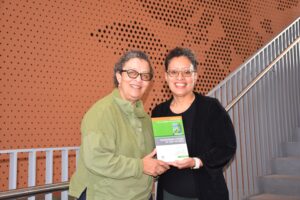
Abu Dhabi, UAE, November 12, 2025: Scientists from New York University Abu Dhabi (NYUAD) have unveiled groundbreaking evidence suggesting that water once flowed beneath the surface of Mars. This discovery indicates that the Red Planet may have remained habitable for life far longer than previously assumed.
The study, recently published in the Journal of Geophysical Research – Planets, reveals that ancient sand dunes within Gale Crater, a region extensively explored by NASA’s Curiosity rover, gradually transformed into rock formations after interacting with subsurface water billions of years ago.
Exploring Martian Subsurface Water
Led by Dimitra Atri, Principal Investigator of NYUAD’s Space Exploration Laboratory, and research assistant Vignesh Krishnamoorthy, the team conducted a comparative analysis using data from the Curiosity rover alongside rock formations found in the UAE desert. These Earth formations developed under conditions akin to those on ancient Mars.
Their findings suggest that water from a nearby Martian mountain seeped into the dunes through minute cracks, saturating the sand from below. This process left behind minerals such as gypsum, which are also present in Earth’s deserts. These minerals have the potential to trap and preserve traces of organic material, marking them as prime targets for future missions aiming to uncover evidence of past life.
“Our findings show that Mars didn’t simply go from wet to dry,” Atri stated. “Even after its lakes and rivers disappeared, small amounts of water continued to move underground, creating protected environments that could have supported microscopic life.”
Implications for Mars’ Evolution
This discovery offers fresh insights into the evolutionary timeline of Mars, emphasizing the potential of subsurface environments as promising sites for the search for ancient life. The study, supported by the NYUAD Research Institute, was conducted at NYUAD’s Center for Astrophysics and Space Science, a hub for innovative research aimed at advancing our understanding of the universe and bolstering the UAE’s role in global space exploration.
The research was a collaborative effort, involving James Weston of NYUAD’s Core Technology Platform and Panče Naumov’s research group. Their combined expertise has paved the way for a deeper understanding of Mars’ geological history and its implications for astrobiology.
NYUAD’s Role in Global Space Research
NYU Abu Dhabi stands as a beacon of academic excellence, ranked among the world’s top universities by Times Higher Education. As the highest globally ranked university in the UAE, NYUAD boasts a legacy of nurturing exceptional talent, including 24 Rhodes Scholars.
On the research front, NYUAD’s faculty includes four Nobel Laureates, and the institution has established over 90 faculty labs and projects, producing more than 9,500 internationally recognized publications. According to the Nature Index, NYUAD ranks number one in the UAE for publications in the world’s top science journals, underscoring its pivotal role in advancing scientific inquiry.
Looking Forward
The findings from NYUAD’s study not only reshape our understanding of Mars’ past but also set the stage for future explorations. As space agencies worldwide gear up for new missions to the Red Planet, the insights gained from this research could guide the search for evidence of life, both past and present, beneath Mars’ surface.
With the potential for subsurface environments to harbor traces of ancient life, the quest to unravel Mars’ mysteries continues to captivate scientists and space enthusiasts alike. As we look to the future, the discoveries made by NYUAD’s team serve as a testament to the power of collaborative research and the enduring human spirit of exploration.






